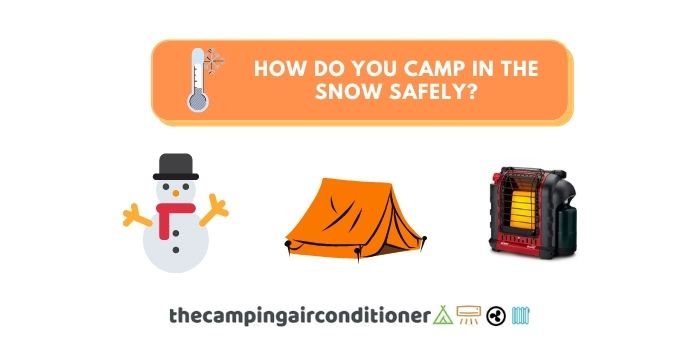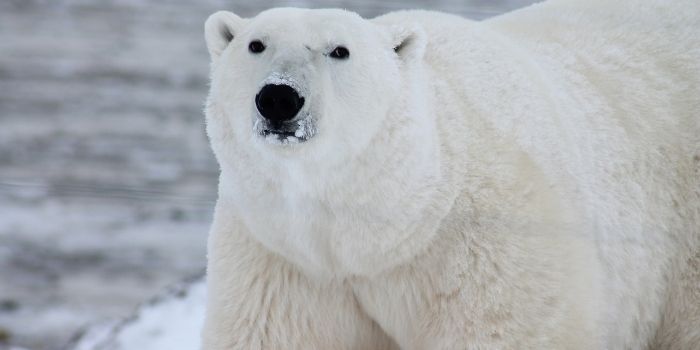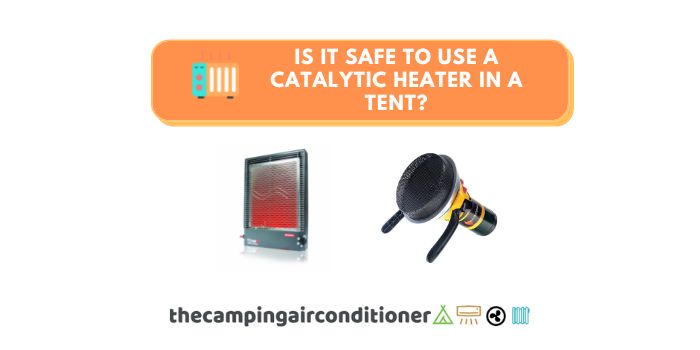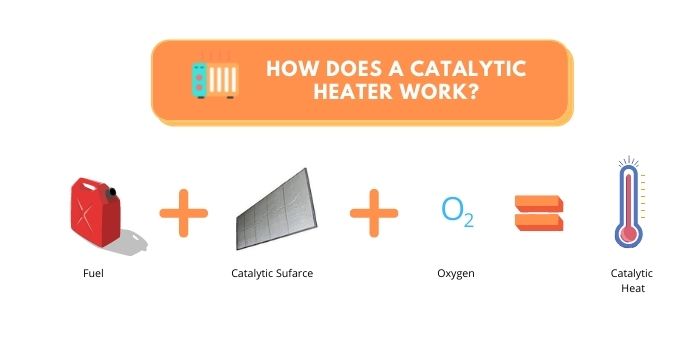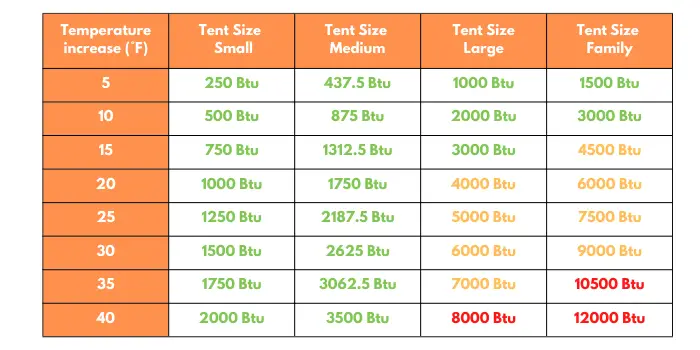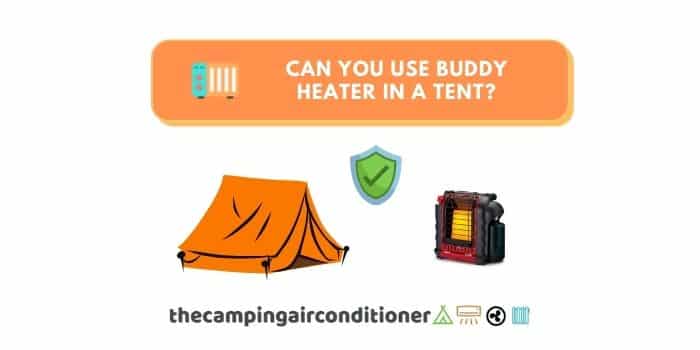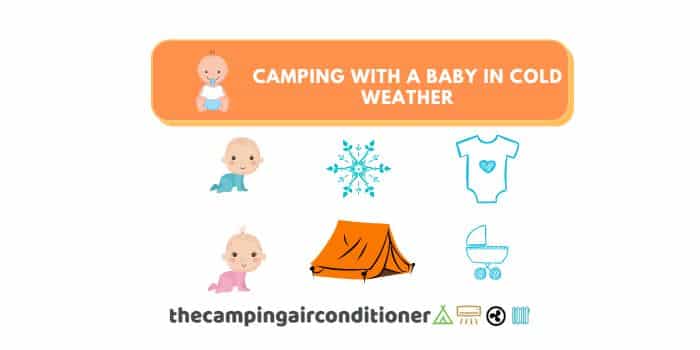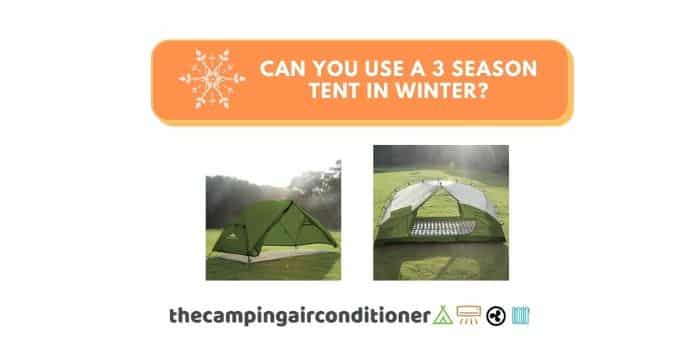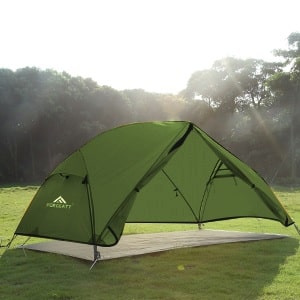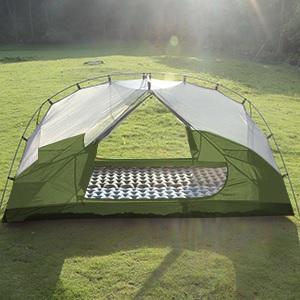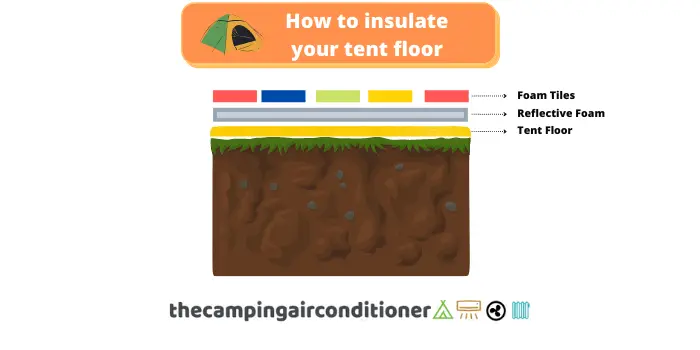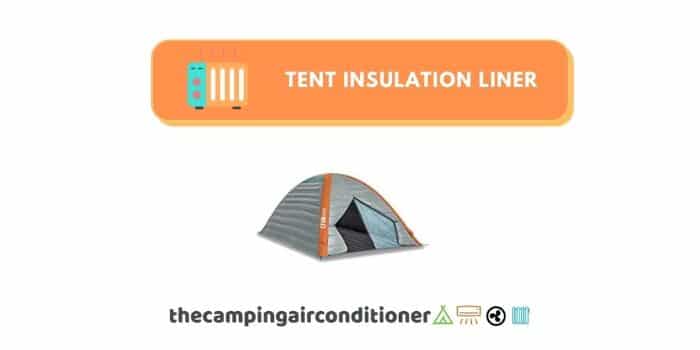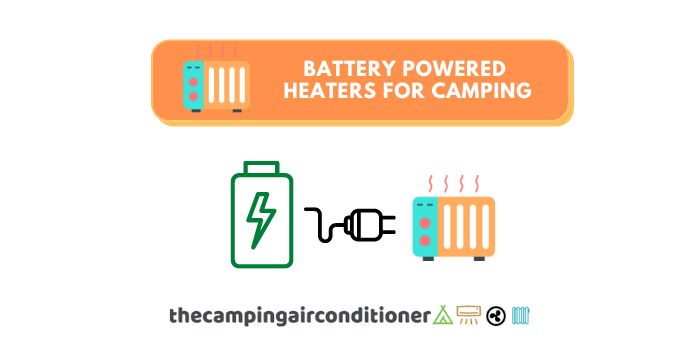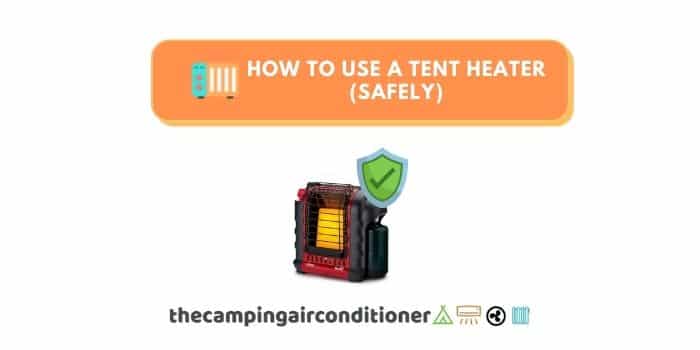Car Camping Heaters – How To Safely Use Them!
Car camping offers a different type of comfort. Of course, sleeping in a car isn’t exactly like sleeping in a hotel, but having that type of shelter is definitely better than camping out in the wild and worrying about how to keep warm on freezing nights.
Even though global temperatures have been rising, winters still get very cold. In fact, global warming has actually caused winters to get even colder in recent years.
While car camping sounds simple, the second the temperatures drop, it becomes a little more complicated. That’s why it’s very important to be prepared if you want to go car camping in the winter.
Even though car bodies (generally made of metal) can offer an extra layer of thermal insulation, you might face freezing camping conditions. The solution for these days? A car camping heater.
In this article, I’ll take a look at a few of my favourite models and help you find the right type of heater for your car camping adventure.
But before we do that, I want to talk to you a little bit about whether car heaters are safe for camping and take a closer look at the different types of car heaters used for camping.
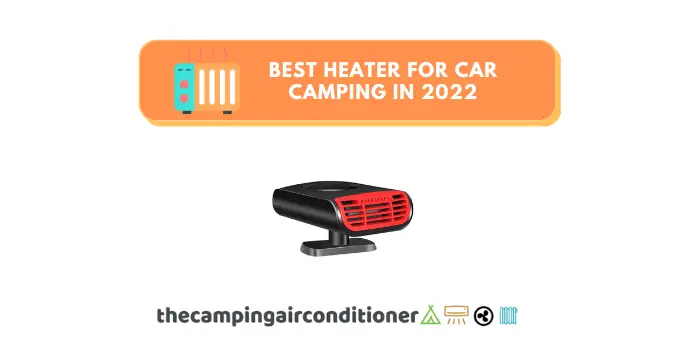
By the way, The Camping Air Conditioner is sponsored by readers. When you buy through one of our links, we may earn an affiliate commission at no extra cost to you.
Car Camping Heater - Summary Review
In a hurry? Here are 3 of the best car camping heaters on the market today.
While car camping can certainly keep all the bugs and insects away at night, it can’t keep out the cold – not unless you have a car heater of course.
My favorite car heater is the Mr. Heater model. I’ve tried and tested it on a number of occasions and it has never let me down (You can also easily use it if you are tent camping!).
If the price of Mr. Heater doesn’t quite match your budget, you can’t go wrong with going for the personal mini heater from Amazon Basics.
And if you’re looking to minimize the volume of camping gear you’re carrying with you, then you should definitely go for the portable car heater by Sunoom.

- Auto shut-off if tipped over
- Easy to carry around
- Great for camping at high altitudes
- Consumes 0.044 Gal/Hr at 4,000 BTU

- Compact and portable design
- Tip-over protection
- Perfect for small spaces - up to 1,700 BTU
- Features efficient ceramic coils that heat up in seconds
Are Car Heaters Safe for Camping?
Yes, they are! It may seem dangerous to bring a heater with you while car camping. However, that is far from the case. Modern car heaters have a lot of safety measures in place to prevent accidents and fires. And since these heaters don’t use fires to generate heat, you are generally safer with a portable heater than you think.
Modern car heaters have oxygen detectors. So, if the temperatures get too hot or the oxygen levels aren’t right, the machine shuts off automatically. This means you won’t have to worry about your safety when using a car heater, especially if you have the right one.
With that said, it’s also important to consider the size of the space you want to heat up. Ideally, you would want a heater that can handle all the space in your car and that of a small tent.
This gives you a lot of flexibility and will make for a great camping experience. And remember, don’t put yourself at risk even if you have a camping car heater if it’s too cold to camp.
Here’s how to safely use your car heater:
- Make sure there’s plenty of space around
- Make sure the heater isn’t covered or obstructed while working
- Practice common sense and stay wary
The Types of Heaters Used for Car Camping
When you go on the market to look for car camping heaters, you will find that there are many different types.
And as a result, the large choice available can leave some campers confused. It certainly left me confused when I was looking for my first car heater all those years ago.
To make things easier for you, below, I’ll go through some of the most common types that I and many more campers are currently using.
Electric Heaters
These are also called ceramic heaters and are arguably the safest option available today. This is my most recommended option if you plan on sleeping only in your car throughout the whole camping trip. This is because electric heaters don’t use any gasses to generate heat. This means that you won’t risk carbon monoxide poisoning. Additionally, these heaters usually give you more control over the temperature you want to achieve.
With that said, the downside to these heaters is that you need to plug them in. So, if your car doesn’t have any electrical source or if you didn’t pack one with you, this might not be the best option for your needs.
If you’re interested in getting yourself an electric car heater, check out the post I recently wrote where I explored the best camping electric heaters on the market.
Propane
Generally, I don’t recommend propane heaters for enclosed spaces. This is because they use fire to generate heat, which can become a fire hazard and carbon monoxide poisoning.
But if you are using a propane heater for your camping trip, make sure to not use it in an enclosed space and ensure it has some sort of covering that offers protection from fire.
With that being said, propane car camping heaters are a good idea if you plan on safely camping in the snow during the winter when the temperatures can reach below zero.
Fan Heaters
Traditional electric heaters heat up ceramic plates with electricity, which is what raises the temperature inside your space. Fan heaters work similarly, but instead of heating ceramic plates, they use metal fans, which work very well for heating your car.
The Best Heater for Car Camping in 2022
Now that I’ve gone over the basic types of heaters you’ll come across when browsing the market, let’s take a look at some of the best heaters for car camping in 2022. I picked these models based on functionality, design, and portability.
I note that 12v heaters will usually have limited heating capacity and it might be worth considering other alternatives, as detailed below.
Any of these models will be able to provide you with the heat you need when on a car camping trip. However, they each have special characteristics that would make them ideal for certain campers. So, keep reading to figure out which one best suits your needs.
Sunoom 2 in 1 Car Heater - Most Portable Option
This isn’t a heater I’d personally recommend for people who are camping with a large group or in a big space such as a minivan or a camper.
This is a relatively small heater specifically designed for cars. It’s a ceramic heater, so it’s very safe to use indoors. However, you can’t expect this to heat up large spaces that well.
With that said, the Sunoom 2 in 1 is one of the best options available if you’re going on a solo or very small group camping trip (heating capacity 150w/500 BTU), as all you need to do is plug it into a source of electricity, and wait for the temperature to rise indoors to rise.
It’s worth noting that this particular model can be plugged into both your lighter socket and a portable battery or power bank (might work well for backpackers also!).
Aside from being very compact and easy to carry around, it’s also one of the more affordable ones on the market. You won’t have to worry about this heater burning a deep hole in your wallet.
- Capacity - 150w (500 Btu)
- Can remove fog from car window
- Compact and very portable
- Can be plugged into a lighter socket or alternative source of power
- The design isn't particularly sturdy
- Not suitable for use while driving
- Can be plugged in lighter socket or alternative source of power
- Automobile demister can quickly solve the car glass fog
- Universal shaft adjustment
- Compact and portable design
Amazon Basics Personal Mini Heater - Most Affordable Pick
If you are keen on getting a ceramic heater but have a larger space to heat up at night, this Amazon Basics model is a great option to keep you nice and comfortable during the night.
The only downside to this model is that you have to bring some sort of power supply or adapter for the heater since it won’t work with your car’s cigarette lighter socket. We suggest an 12v adapter, such as Bestek 12v power inverter (cost less than $20 and might be extremely helpful for other camping tools).
With that said, there are many people who camp with small batteries to power simple electronics. If you have this in your camping gear bag, that’s all you’ll need to make this model work.
The ceramic coils that this model features are also of exceptionally high-quality. This means that this camping car heater is not only great at warming up your indoors but also keeping you and everyone else safe throughout the night.
- Portable and aesthetic design
- Great for solo car campers
- Features ceramic coils that keep warm for longer
- Includes tip-over protection
- Requires a power adapter to run from your car battery
- Compact personal car camping heater
- Efficient ceramic coils that heat up in seconds
- Available in 4 colors to custom-match your decor
- Includes tip-over protection for extra safety
Mr. Heater - Best Overall Car Heater (Pay Attention to Safety Measures!)
This is one of the most widely-used options for campers on the market today. With this model, you can rest assured that you will be safe while staying warm and comfortable in your vehicle (or also tent camping!).
Granted, this is a propane-powered heater. However, this model is indoor-safe because of the protective grills it features. Since it’s a propane heater, it has a lot of power to keep you warm at night (up to 9,000 BTU).
This makes it great if you need to raise the temperatures significantly. So, if you’re camping in a particularly cold area at an altitude of up to 7,000 feet above sea levels, this heater is a good choice.
But that isn’t all this model has to offer. The heater has a ton of built-in safety features, such as auto-shut-off to ensure that the heater doesn’t get too hot . On top of that, it’s very portable, so you won’t have a hard time loading it into your car for your upcoming camping adventures.
With that said, propane heaters aren’t the best option for everyone. Again, they aren’t as safe as electric heaters. Gas heaters release carbon monoxide in the air, which can lead to poisoning and dangerous consequences. So, if you are using them in your car, NEVER let them running while sleeping in your car, and always ensure there minimal ventilation through the windows.
However, I have to say that this Mr. Heater has some of the best safety features in the market, which is why it tops our list. Besides, it has plenty of BTU to keep you and everyone nice, warm, and comfortable during the night.
- Tip-over protection
- Low oxygen level detector
- Great for all four seasons
- Great for heating spaces of up to 225 square feet
- Can turn off if used over 7,000 feet above sea level
- Bulky in design to be used in a car
- 4,000- to 9,000-BTU radiant heater for spaces up to 225 square feet
- Suitable for altitudes of up to 7,000 feet
- Auto shut-off if tipped over
- Low oxygen level detector
Heater for Car Camping - What Are the Other Alternatives?
If you are looking for another alternative that is compatible with your car lighter plug, we recommend having a this 360-rotation degree mode, which comes with a 12v socket, and is very safe to operate, offering a heating output of 150w (500 BTU).
Conclusion
There’s no doubt that car camping can be as comfortable as camping in a tent. But during a cold night out, it doesn’t really matter if you’re in a car or a tent. When it gets cold, you’ll be uncomfortable no matter what.
And that’s why I always recommend campers who plan on camping out in the cold to get their hands on a heater for car camping. Above, I showed you some of my favorite picks, so if you’re still wondering whether you should get one or not, I couldn’t recommend them enough.






